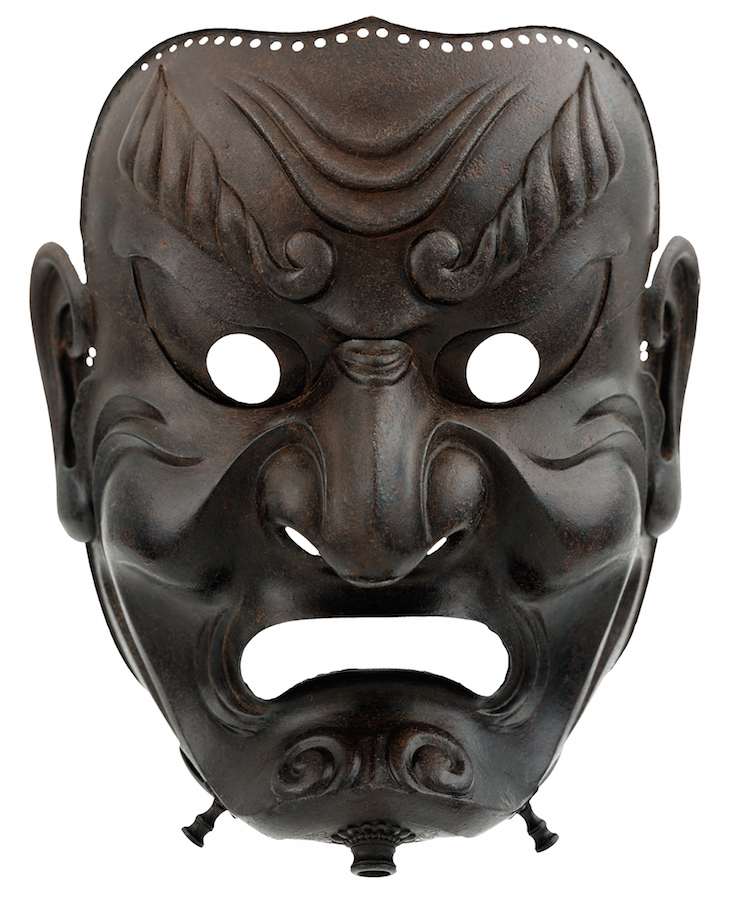The armour of the samurai offered more than protection on the battlefield – with its intricate symbols, it was emblematic of the warrior’s status. More than 100 objects from the renowned collection of Ann and Gabriel Barbier-Mueller chart the rise of the samurai class from the 12th century to its demise in 1868, and explore the importance of armour to the samurai’s identity. Find out more from the Kunsthalle Munich’s website.
Preview the exhibition below | See Apollo’s Picks of the Week here

Full-face mask (1710), Myochin Ki no Munenaga. Photo: Brad Flowers; courtesy Ann & Gabriel Barbier-Mueller Museum, Dallas
At the end of the 12th century, Minamoto no Yoritomo seized control of Japan from the imperial aristocracy, becoming the nation’s first shogun, or supreme military commander, and replacing the old elite with the aristocratic warrior class. In the centuries that followed, the state dissolved into a cluster of warring provinces, ruled by regional samurai overlords known as daimyo. The armour and the stories that survive from this age of war have cemented in the popular imagination the impression of the samurai as ferocious, unwavering warrior.

Sword (1660–70), Yokoyama Kozuke Daijo Fujiwara Sukesada. Photo: Brad Flowers; courtesy Ann & Gabriel Barbier-Mueller Museum, Dallas
Firearms never caught on in Japan to the same extent as they did elsewhere, in part because of the great symbolic significance attached to the sword. The sword was believed to represent the soul of the samurai, and was the tangible sign of his honour on the battlefield.

Armour (sashimoni: late 16th century; armour: early 17th century), Japan. Photo: Studio Ferrazzini Bouchet Photography, Geneva; courtesy Ann & Gabriel Barbier-Mueller Museum, Dallas
At the start of the 17th century Japan was reunited, and the new shogun moved the government to Edo. The Edo period was one of relative peace, meaning that the samurai took on new, bureaucratic roles. The symbolic meaning of armour changed, too. Religious motifs – demons, dragons, Buddhist protective deities – were designed less to terrify enemy combatants than to express the individuality of the wearer.

Armour (helmet: 1336–92; suit: 18th century), Japan. Photo: Brad Flowers; courtesy Ann & Gabriel Barbier-Mueller Museum, Dallas
The increasingly ornate forms armour took during the Edo period underlined its function as a status symbol. Military equipment was not included in laws forbidding luxury, and the samurai took full advantage of their opportunity for opulence. One of the reasons that the shogunate came to an end in 1868 was because of the huge strain the samurai exerted on public finances.











![Masterpiece [Re]discovery 2022. Photo: Ben Fisher Photography, courtesy of Masterpiece London](http://www.apollo-magazine.com/wp-content/uploads/2022/07/MPL2022_4263.jpg)
Has the Fitzwilliam lost the hang of things?